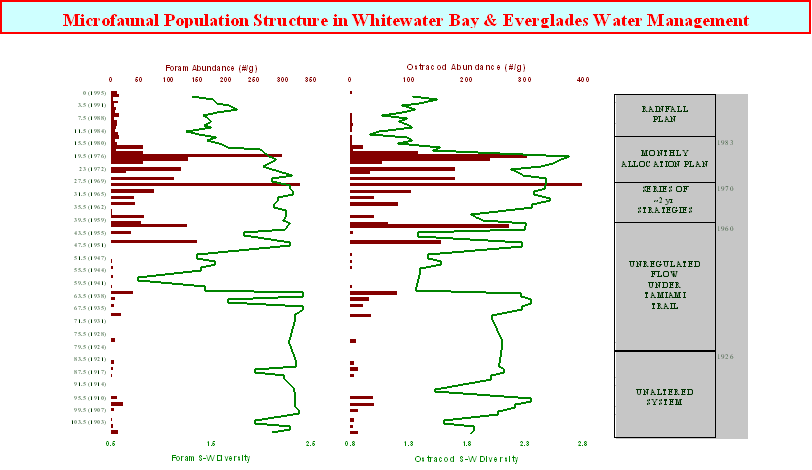

This figure illustrates benthic foraminifer and ostracod assemblages which exhibit parallel trends in community structure in sediments from Whitewater Bay. This history, which extends back to the turn of the century shows, within dating uncertainties, several major changes in community structure that temporally correspond to changes in water management strategy. With the exception of a low diversity (stressed community) period after the hurricane of 1935, the time period of unmanaged water flow down Shark River Slough was characterized by low abundance but high diversity communities. This was followed by a high diversity, high abundance period (indicating favorable conditions), which corresponded to water management efforts to even out temporal flow variation (Monthly Allocation Plan). The most recent “Rainfall Plan” period is represented by consistently stressed communities (low abundance and low diversity) from the early 1980s upwards to core top (1995).